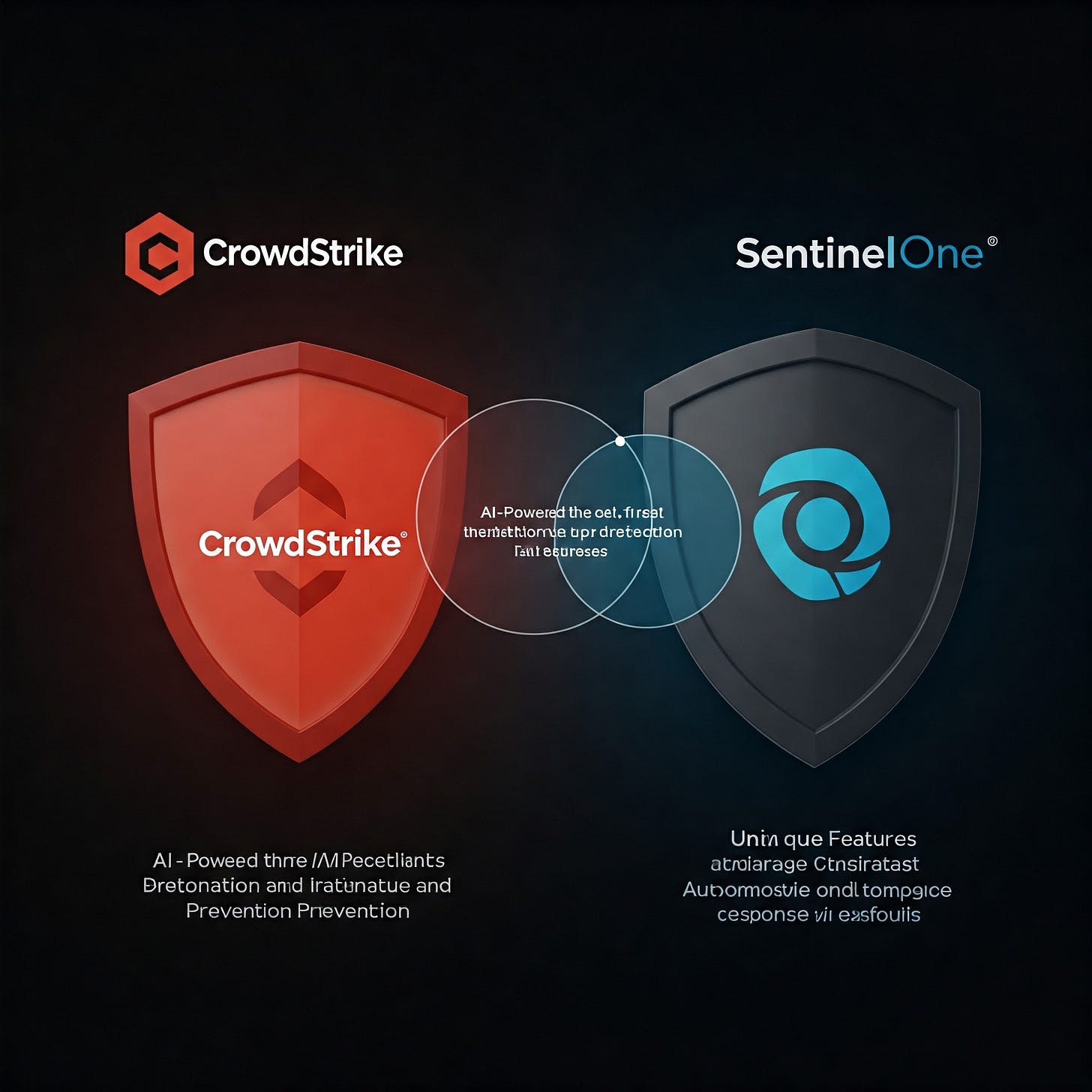CrowdStrike vs. SentinelOne
A Head-to-Head Comparison of Endpoint Security Titans
In the ever-evolving landscape of cybersecurity, Endpoint Detection and Response (EDR) solutions have become indispensable tools for organizations seeking to protect their digital assets. Among the leading contenders in this space are CrowdStrike and SentinelOne, both offering robust platforms designed to detect and respond to sophisticated cyber threats. This article delves into a comprehensive comparison of these two powerhouses, examining their key features, strengths, and weaknesses to help you make an informed decision for your organization's security needs.
Core Capabilities and Features
Both CrowdStrike and SentinelOne provide a comprehensive suite of features aimed at preventing, detecting, and responding to endpoint threats. These include:
Next-Generation Antivirus (NGAV): Both platforms employ advanced techniques like machine learning and behavioral analysis to identify and block malware and other malicious software.
Endpoint Detection and Response (EDR): This core capability enables real-time monitoring of endpoint activity, detection of suspicious behavior, and automated response to contain and remediate threats.
Threat Hunting: Both platforms offer tools and capabilities to proactively search for and identify potential threats within the network.
Incident Response: In the event of a security incident, both solutions provide tools to investigate the attack, understand its scope, and take appropriate action to mitigate the damage.
CrowdStrike: Strengths and Weaknesses
CrowdStrike's Falcon platform is renowned for its cloud-native architecture, which provides scalability, ease of deployment, and centralized management. Its key strengths include:
Superior Threat Detection: CrowdStrike consistently scores high in independent tests, demonstrating its effectiveness in detecting and preventing a wide range of threats.
Comprehensive Feature Set: CrowdStrike offers a broad range of modules and capabilities, including threat intelligence, vulnerability management, and IT hygiene, catering to diverse security needs.
Strong Managed Services: CrowdStrike's managed detection and response (MDR) offering is highly regarded, providing expert support and threat hunting capabilities.
However, CrowdStrike also has some potential drawbacks:
Higher Cost: CrowdStrike's pricing can be higher compared to some competitors, especially for organizations requiring a full suite of modules.
Complexity: The platform's extensive features and customization options can make it complex to manage, requiring specialized expertise.
SentinelOne: Strengths and Weaknesses
SentinelOne's Singularity platform stands out for its autonomous approach, leveraging AI and automation to detect and respond to threats in real time. Its key strengths include:
Autonomous Threat Prevention: SentinelOne's AI-powered engine can automatically detect and respond to threats without human intervention, reducing response times.
Ease of Use: The platform's intuitive interface and automated features make it relatively easy to deploy and manage.
Cost-Effectiveness: SentinelOne's pricing is generally more competitive than CrowdStrike, making it an attractive option for budget-conscious organizations.
However, SentinelOne also has some limitations:
Less Comprehensive Feature Set: Compared to CrowdStrike, SentinelOne's feature set may be less extensive, particularly in areas like threat intelligence and vulnerability management.
Limited Managed Services: While SentinelOne offers MDR services, they may not be as comprehensive as CrowdStrike's offering.
Choosing the Right Solution
The choice between CrowdStrike and SentinelOne depends on your organization's specific needs and priorities. Consider the following factors:
Budget: If cost is a major concern, SentinelOne may be the more attractive option.
Complexity: If you need a solution that is easy to manage, SentinelOne's autonomous approach may be preferable.
Features: If you require a comprehensive suite of security features, CrowdStrike may be the better choice.
Managed Services: If you need expert support and threat hunting capabilities, CrowdStrike's MDR offering is highly regarded.
Ultimately, the best way to determine which solution is right for you is to conduct a thorough evaluation and compare the platforms in your own environment. Consider factors like your organization's size, industry, risk profile, and security team's expertise.
Conclusion
CrowdStrike and SentinelOne are both powerful EDR solutions that offer robust protection against cyber threats. While CrowdStrike excels in its comprehensive feature set and threat detection capabilities, SentinelOne stands out for its autonomous approach and ease of use. By carefully considering your organization's needs and conducting a thorough evaluation, you can choose the platform that best aligns with your security goals.


